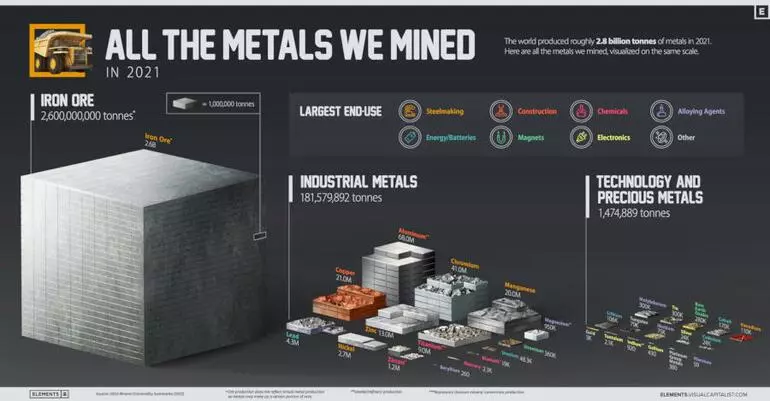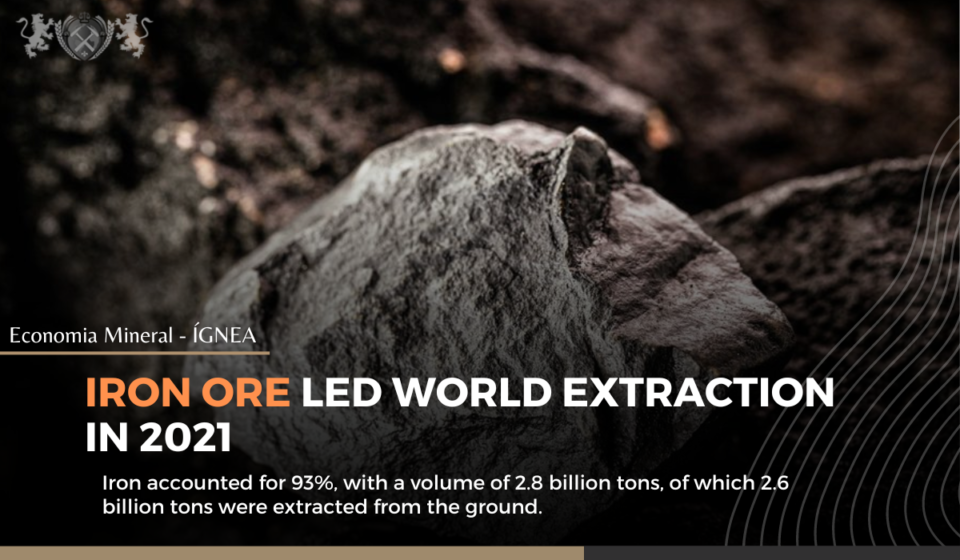According to data from the United States Geological Survey (USGS), of all ores mined in 2021, iron ore accounted for 93%, with a volume of 2.8 billion tons, of which 2.6 billion tons were extracted from the ground. Of the total, 98% is converted into pig iron for steel production.
As for the so-called industrial minerals, the world extracted more than 181 million tons last year, of which aluminum accounts for almost 40%, with China as its largest producer, with more than half of global aluminum production. The construction industry uses about 25% of the aluminum produced annually, with 23% going into transportation.

Chromium, a lesser-known metal, plays a key role in the manufacture of stainless steel, which has 10% to 30% chromium in its composition, increasing its resistance to corrosion.
Copper, manganese, and zinc complete the five main industrial metals extracted in 2021, each with its unique properties and functions in the economy.
Technological metals include those used in technology and devices. Compared to industrial metals, they are generally mined on a smaller scale and may experience faster growth in consumption as the world adopts new technologies.
Rhenium, one of the rarest metals, is used in superalloys that are critical for aircraft turbine blades and gas turbines. The petroleum industry uses it in rhenium-platinum catalysts to produce high-octane gasoline for vehicles.
As for lithium, production has more than doubled since 2016, due to its use in making batteries for electric vehicles. In the same period, global rare earth production has more than doubled, driven by growing demand for magnets. Indium is another interesting metal on this list, as its large share is used to make indium-tin oxide, an important component of touchscreens, TV screens, and solar panels.
Global production of iron ore and aluminum has more than tripled since the mid-1990s, and other metals such as copper and steel have also seen significant growth in consumption.
Source: Revista Brasil Mineral















